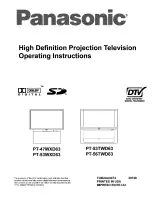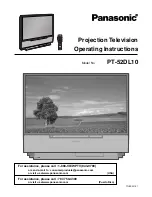
IFU . 3
THE FIVE CARE PICTOGRAMS INDICATE
Do not iron. • Nicht bügeln. • Ne pas repasser. • Non stirare. • No planchar. • Não passar a ferro. • Niet strijken. • Skal ikke
strykes. • Må ikke stryges. • Får ej strykas. • Ei saa silittää. • Nie prasować. • Ne vasalja. • Nežehlit. • Не глади. • Nežehliť.
• Ne likati. • Nu călcaţi cu fierul de călcat. • Nelyginti. • Negludināt. • Mitte triikida. • Ütülemeyin. • Απαγορεύεται το
σιδέρωμα. • Ne glačati. • Не гладить.
Do not machine dry. • Nicht im Wäschetrockner trocknen. • Ne pas sécher en machine. • Non asciugare nell’asciugatrice.
• No usar secadora. • Não colocar na máquina de secar. • Niet machinaal drogen. • Må ikke tørkes i trommel. • Må ikke
tørretumbles. • Får ej torktumlas. • Ei saa kuivattaa koneellisesti. • Nie suszyć w suszarce. • Ne szárítsa géppel. • Nesušit
v sušičce. • Не суши машинно. • Nesušiť v sušičke. • Ne sušiti v stroju • Nu puneţi în maşina de uscat rufe. • Nedžiovinti
džiovyklėje. • Neveikt automātisko žāvēšanu. • Ärge masinkuivatage. • Kurutma makinesinde kurutmayın. • Απαγορεύεται
η χρήση στεγνωτηρίου. • Ne sušiti u sušilici. • Не подвергать машинной стирке.
Do not dry clean. • Nicht chemisch reinigen. • Ne pas nettoyer à sec. • Non lavare a secco. • No limpiar en seco. • Não
limpar a seco. • Niet chemisch reinigen. • Må ikke renses. • Må ikke kemisk renses. • Får ej kemtvättas. • Ei saa puhdistaa
kemiallisesti. • Nie czyścić chemicznie. • Ne tisztítsa vegyileg. • Nečistit chemicky. • Не почиствай чрез химическо
чистене. • Nečistiť chemicky. • Ne kemično čistiti. • Nu curăţaţi chimic. • Nevalyti cheminiu būdu. • Neveikt ķīmisko
tīrīšanu. • Ärge püüdke puhastada. • Kuru temizleme yapmayın. • Απαγορεύεται το στεγνό καθάρισμα. • Ne čistiti u
kemijskoj čistionici. • Не подвергать химической чистке.
Do not bleach. • Nicht bleichen. • Ne pas utiliser de javel.• Non candeggiare. • No utilizar blanqueador. • Não utilizar
alvejante. • Niet bleken. • Må ikke blekes. • Må ikke bleges. • Får ej blekas. • Ei saa valkaista. • Nie wybielać. • Ne fehérítse.
• Nebělit. • Не избелвай. • Nepoužívať bielidlo. • Ne beliti. • Nu folosiţi înălbitori. • Nebalinti. • Nebalināt. • Ärge
valgendage. • Çamaşır suyu kullanmayın. • Απαγορεύεται η χρήση λευκαντικού. • Ne izbjeljivati. • Не отбеливать.
ENGLISH
INSTRUCTIONS FOR USE
INSIDE LABEL MARKINGS
Trademark.
PPE manufacturer.
Model identification for accessories made of Tychem® 2000 C and 6000 F
fabric. This instruction for use provides information on these accessories.
CE marking - The Partial Body (PB) accessories comply with the requirements for
category III personal protective equipment according to European legislation, Regulation (EU) 2016/425. Type-examination and quality assurance certificates
were issued by SGS Fimko Oy, P.O. Box 30 (Särkiniementie 3), 00211 HELSINKI, Finland, identified by the EC Notified Body number 0598.
Indicates com-
pliance with European standards for chemical protective clothing.
Partial body protection “types” achieved by these accessories defined by the European
standards for chemical protective clothing: EN 14605:2005 + A1 2009 (Type PB [3]). These accessories also fulfill the requirements of EN 14126:2003 Type PB [3-B].
Country of origin.
Date of manufacture.
Flammable material. Keep away from fire. These accessories and/or fabrics are not flame resistant and
should not be used around heat, open flame, sparks or in potentially flammable environments.
Sizing pictogram indicates body or article measurements
(cm) & correlation to letter code. Check your body, arm or foot measurements and select the correct size.
Wearer should read these instructions for use.
Do not re-use. Other certification(s) information independent of the CE marking and the European notified body.
PERFORMANCE OF THESE ACCESSORIES:
FABRIC PHYSICAL PROPERTIES
Tychem® 2000 C
Tychem® 6000 F
Test
Test method
Result
EN Class*
Result
EN Class*
Abrasion resistance
EN 530 Method 2
> 1500 cycles
5/6**
> 2000 cycles
6/6**
Flex cracking resistance
ISO 7854 Method B
> 5000 cycles
3/6**
> 1000 cycles
1/6**
Trapezoidal tear resistance
EN ISO 9073-4
> 10 N
1/6
> 20 N
2/6
Tensile strength
EN ISO 13934-1
> 100 N
3/6
> 100 N
3/6
Puncture resistance
EN 863
> 10 N
2/6
> 10 N
2/6
* According to EN 14325:2004 ** Pressure pot
TYCHEM® 2000 C FABRIC RESISTANCE TO PENETRATION BY LIQUIDS (EN ISO 6530)
Chemical
Penetration index - EN Class*
Repellency index - EN Class*
Sulphuric acid (30%)
3/3
3/3
Sodium hydroxide (10%)
3/3
3/3
o-Xylene
3/3
3/3
Butan-1-ol
3/3
2/3
* According to EN 14325:2004
TYCHEM® 6000 F FABRIC RESISTANCE TO PENETRATION BY LIQUIDS (EN ISO 6530)
Chemical
Penetration index - EN Class*
Repellency index - EN Class*
Sulphuric acid (30%)
3/3
3/3
Sodium hydroxide (10%)
3/3
3/3
o-Xylene
3/3
3/3
Butan-1-ol
3/3
3/3
* According to EN 14325:2004
TYCHEM® 2000 C FABRIC AND TAPED SEAMS RESISTANCE TO PERMEATION BY LIQUIDS (EN ISO 6529 METHOD A, BREAKTHROUGH TIME AT 1 μg/cm
2
/min)
Chemical
Breakthrough time (min)
EN Class*
Sulphuric acid (98%)
> 480
6/6
* According to EN 14325:2004
TYCHEM® 6000 F FABRIC AND TAPED SEAMS RESISTANCE TO PERMEATION BY LIQUIDS (EN ISO 6529 METHOD A, BREAKTHROUGH TIME AT 1 μg/cm
2
/min)
Chemical
Breakthrough time (min)
EN Class*
n-Hexane
> 480
6/6
* According to EN 14325:2004
FABRIC RESISTANCE TO PENETRATION OF INFECTIVE AGENTS
Tychem® 2000 C - Tychem® 6000 F
Test
Test method
EN Class*
Resistance to penetration by blood and body fluids using synthetic blood
ISO 16603
6/6
Resistance to penetration by blood-borne pathogens using
bacteriophage Phi-X174
ISO 16604 Procedure C
6/6
Resistance to penetration by contaminated liquids
EN ISO 22610
6/6
Resistance to penetration by biologically contaminated aerosols
ISO/DIS 22611
3/3
Resistance to penetration by biologically contaminated dust
ISO 22612
3/3
* According to EN 14126:2003
SEAM PROPERTIES
Tychem® 2000 C
Tychem® 6000 F
Test method
Result
EN Class*
Result
EN Class*
Seam strength (EN ISO 13935-2)
> 125 N
4 of 6
> 125 N
4 of 6
* According to EN 14325:2004
For further information about the barrier performance, please contact your supplier or DuPont: www.ipp.dupont.com
RISKS AGAINST WHICH THE PRODUCT IS DESIGNED TO PROTECT:
These accessories only provide partial body protection
and are intended to protect those parts of the body exposed to risk. They are designed to protect workers from hazardous substances, or sensitive products
and processes from contamination by people. They may be used separately or in combination with other Personal Protective Equipment to increase the protection
level needed. They are typically used, depending on chemical toxicity and exposure conditions, for protection against certain organic (Tychem® 6000 F) & inorganic
(Tychem® 2000 C) liquids. Fabrics used for these accessories have passed all tests of EN 14126:2003 (protective clothing against infective agents). Under
the exposure conditions as defined in EN 14126:2003 and mentioned in the table above, the obtained results conclude that the materials offer a barrier
against infective agents.
LIMITATIONS OF USE
: These accessories and/or fabrics are not flame resistant and should not be used around heat, open flame, sparks or in poten-
tially flammable environments. Tyvek® melts at 135°C, the fabric coatings melt at 98°C. It is possible that a type of exposure to bio hazards not corresponding
to the tightness level of these accessories may lead to a bio-contamination of the user. According to the European standard (EN 14605:2005 + A1 2009; Type
PB [3-B]) for chemical protective clothing Category III: these accessories offer partial body protection and have not been tested according to the whole suit
Jet test (EN ISO 17491-3:2008). Exposure to certain very fine particles, intensive liquid sprays and splashes of hazardous substances may require full body
personal protective equipment (e.g. coverall) of higher mechanical strength and barrier properties than those offered by these accessories. The user must
ensure suitable reagent to garment compatibility before use. For enhanced protection in certain applications, whole suit chemical protective garments un-
derneath with taping of cuffs, ankles and hood will be necessary. The user shall verify that tight taping is possible in case the application would require doing
so. For best results in taping, the pieces of tape should overlap themselves. Care shall be taken when applying the tape, that no creases appear in the fabric or
tape since those could act as channels. Ensure, that the ties on the overboots, made of these fabrics are securely tied and do not constitute a tripping hazard.
Despite the slip retardant sole on the overboots, care should be taken to avoid slipping, especially on wet surfaces. Ensure the overboots provide adequate
mechanical resistance for the surface to be walked upon and that the sole is not damaged. The sole of the overboots is not liquid tight. The overboots, offering
limited protection in spray form, are unsuitable for walking or standing in liquid spills and must be worn in conjunction with appropriate chemical resistant
footwear. These accessories shall not be used whilst in presence of flammable or explosive atmospheres or while handling flammable or explosive substances.
Please ensure that you have chosen the accessories suitable for your job. For advice, please contact your supplier or DuPont. The user shall perform a risk anal-
ysis upon which he shall base his choice of PPE. He shall be the sole judge for the correct combination of the partial body protective accessories and ancillary
equipment (gloves, boots, respiratory protective equipment etc.) and for how long these accessories can be worn on a specific job with respect to its protec-
tive performance, wear comfort or heat stress. DuPont shall not accept any responsibility whatsoever for improper use of these accessories.
PREPARING FOR USE
: In the unlikely event of defects, do not wear the accessory.
STORAGE AND TRANSPORT
: These accessories may be stored between 15 and 25°C in the dark (cardboard box) with no UV light exposure.
DuPont has performed tests according to ASTM D-572 with the conclusion that these fabrics retain adequate physical strength over a period of 10 years.
Product shall be transported and stored in its original packaging.
DISPOSAL
:These accessories can be incinerated or buried in a controlled landfill without harming the environment. Disposal of contaminated garments
is regulated by national or local laws.
DECLARATION OF CONFORMITY
: Declaration of conformity can be downloaded at: www.safespec.dupont.co.uk.




































